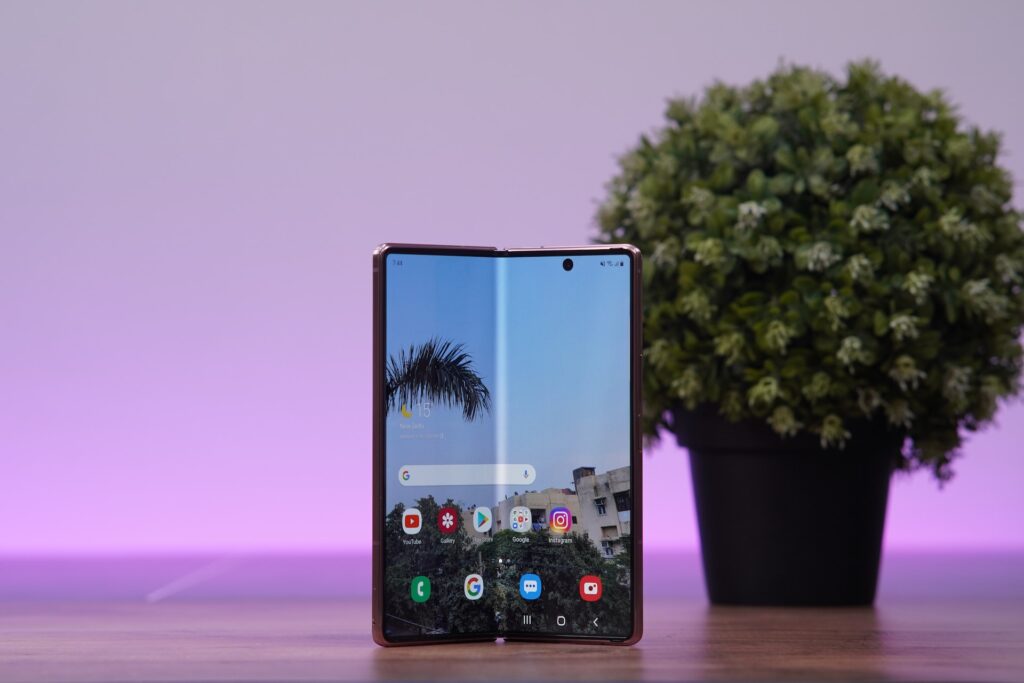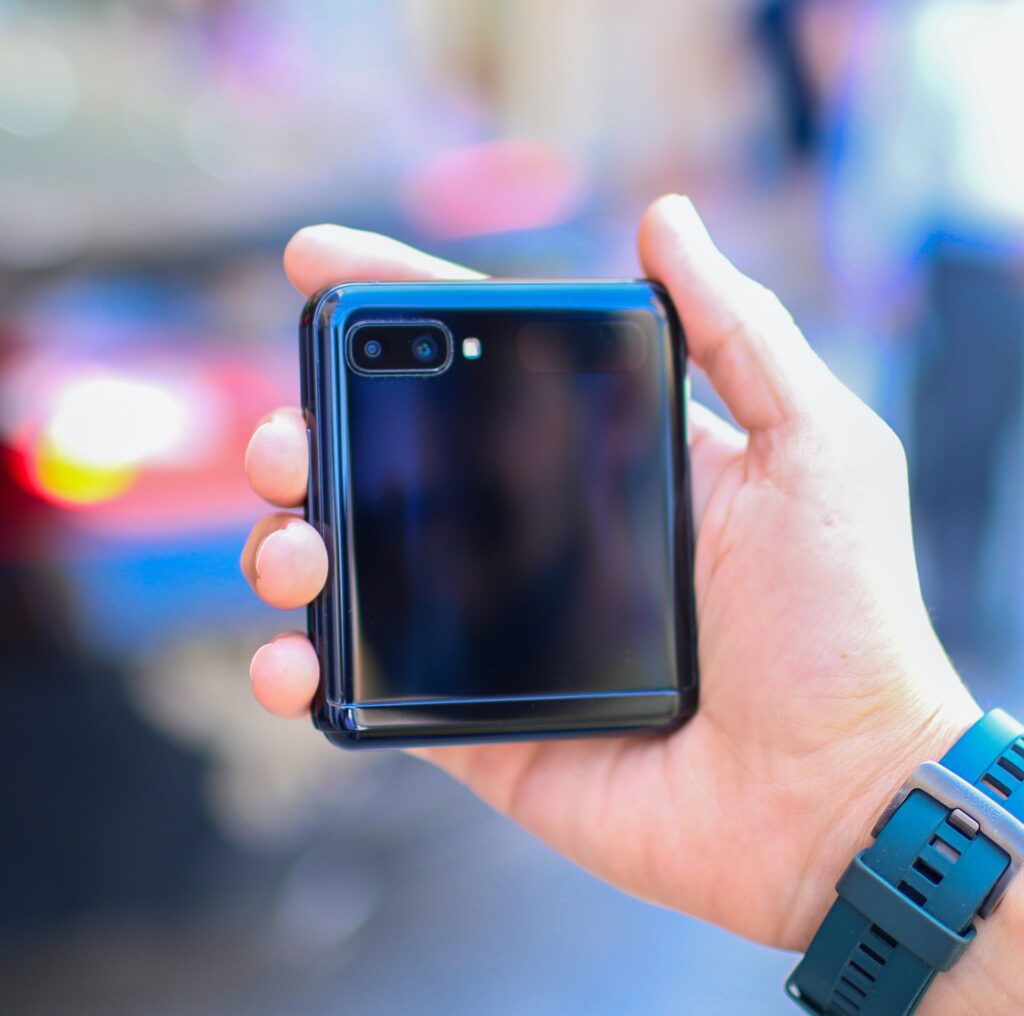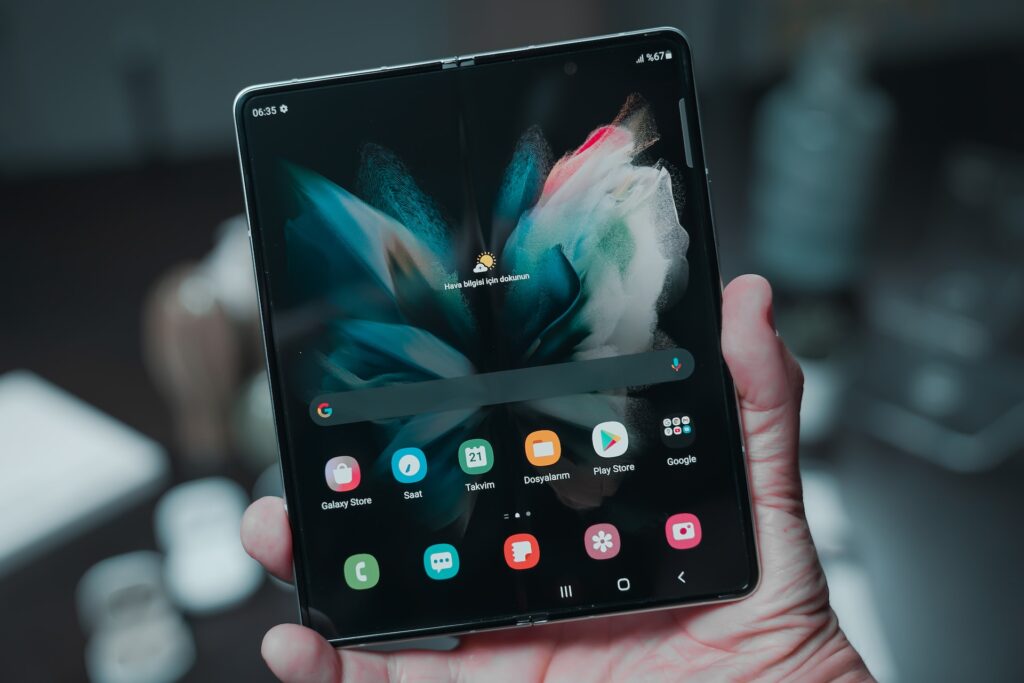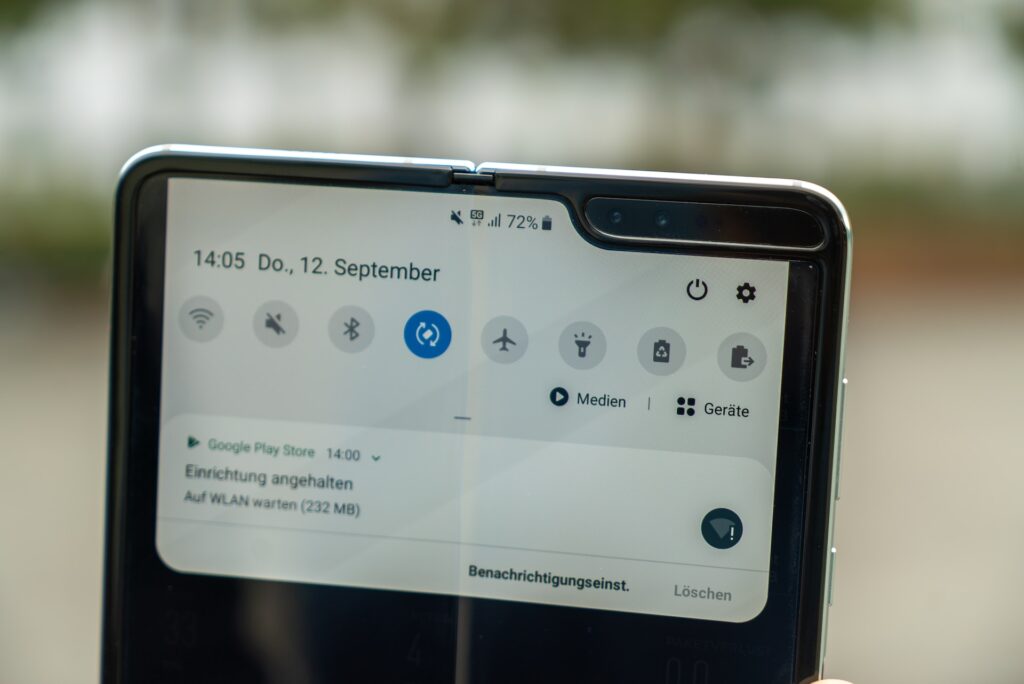In recent years, foldable phones have become the latest trend in mobile devices. With the release of devices like the Samsung Galaxy Z Fold, Motorola Razr, and Microsoft Surface Duo, we’ve seen a shift in the way we think about smartphones and their design.

If you’re like most people, you’re wondering what exactly a foldable phone is and what advantages it offers. In this post, we’ll be exploring all things foldable phones – from their history to the latest technological advancements and what the future may hold.
History of Foldable Phones
The concept of foldable phones isn’t new. First prototypes were developed as early as 2004, but the design had not yet been perfected. In more recent years, companies like Samsung and Huawei began to develop advanced technologies that allowed the foldable phone out of the prototype phase and onto the consumer market.
Pros and Cons of Foldable Phones
The main advantage of foldable phones is obvious. They take up less space than traditional smartphones, making them more portable and easier to carry.
Additionally, many foldable phone designs offer larger screens when unfolded, making them ideal for media consumption. They’re also great for multitasking, allowing the user to split the screen and use multiple apps simultaneously.

One of the biggest disadvantages of foldable phones is their durability. With more moving parts than traditional smartphones, there is an increased risk of damage if not handled carefully. They’re also more expensive than many other mobile devices, which can be a barrier for some consumers.
Types of Foldable Phones
Currently, there are three main types of foldable phones.
- First, there are foldable clamshell phones like the Samsung Galaxy Z Flip, which fold vertically.
- Next, there are foldable tablet phones like the Samsung Galaxy Z Fold, which fold horizontally.
- Finally, foldable book phones like the Huawei Mate Xs have a single fold and offer an expansive screen when unfolded.
5 Most Popular Foldable Phones
Some of the most popular foldable phones currently on the market include the Samsung Galaxy Z Fold series and Z Flip series, the Motorola Razr series, the Oppo Find N, and the Microsoft Surface Duo.
Samsung Galaxy Z Fold Series
The Samsung Galaxy Z Fold series is an embodiment of technology’s cutting-edge advancements. The brand truly reimagined the smartphone experience by being one of the first to offer this unique foldable design. The series includes the Galaxy Z Fold 2 and the more recent Galaxy Z Fold 3. The Z Fold 3, for instance, boasts a refined design that combines a smartphone’s compactness and a tablet’s screen size.

When unfolded, it provides a massive 7.6-inch dynamic AMOLED 2X screen. Users can enjoy an immersive viewing experience, ideal for gaming, streaming videos, or multitasking. Folded, it presents a convenient 6.2-inch display to text, call, or check notifications.
The Galaxy Z Fold series is also notable for its flex mode, which allows the phone to hold open at an angle, essentially acting as its own stand for hands-free use. This is particularly advantageous for video calls or watching media.
Samsung Galaxy Z Flip Series
The Samsung Galaxy Z Flip series represents an innovative twist on traditional smartphone design. It is a rather unique and stylish smartphone. The series includes the original Galaxy Z Flip and the more advanced Galaxy Z Flip3.
The Z Flip3 stands out with its compact, innovative form factor that folds into half of its regular size. When opened, it reveals a 6.7-inch dynamic AMOLED display, while its 1.9-inch cover screen allows you to quickly access notifications, messages, and media controls without having to unfold.
In addition to its sleek design, the Galaxy Z Flip series is renowned for its versatility, particularly in the way it facilitates media consumption and hands-free use. Like the Z Fold series, it also features a flex mode that allows the phone to stand on its own at different angles.
This feature comes in handy for a variety of tasks. For example, you can take hands-free photos, effortlessly navigate through recipes while cooking, or make video calls without needing to hold the phone. The series also boasts a durable design with water and dust resistance, bringing a new level of assurance to users of foldable smartphones.
Related: 5 Best Android Phones That are not Samsung Galaxy.
Motorola Razr Series
The Motorola Razr series epitomizes the harmonious blend of nostalgic design and cutting-edge technology. It has an iconic early 2000s flip phone design with a modern twist. The series includes the 2019 Motorola Razr and the more advanced 2020 Motorola Razr 5G.

The Razr 5G stands out with its slim, stylish design and revolutionary flexible screen that closes completely in half. When unfolded, it reveals a 6.2-inch OLED display, perfect for enjoying media, browsing, or gaming. The Quick View display on the outside enables users to respond to messages, skip songs, get directions, and more without opening the phone.
Hardware-wise, the Motorola Razr series is powered by a Qualcomm Snapdragon 765G processor, ensuring a smooth and efficient user experience. The Razr series also features a 48MP camera with Quad Pixel technology for high-quality, sharp images even in low light conditions.
The camera doubles as a selfie camera when the phone is folded. This means users can take high-resolution selfies with the primary camera. Despite the challenges of foldable design, the Razr series has managed to incorporate a high level of functionality into a truly unique form factor.
Microsoft Surface Duo
The Microsoft Surface Duo made an ambitious foray into the world of foldable devices. This dual-screen device challenges the conventional smartphone design, offering a unique form factor that combines the productivity of a mini-laptop with the portability of a smartphone.
The Surface Duo features two 5.6-inch AMOLED displays that can be combined to form an 8.1-inch PixelSense Fusion display when opened flat. This large, uninterrupted screen space is ideal for multitasking, allowing users to run two different apps side-by-side or spread one app across both screens for a more immersive experience.
On the performance front, the Surface Duo is powered by a Qualcomm Snapdragon 855 processor, ensuring a smooth and responsive user interface. It also features a 360-degree hinge, allowing users to fold the device in various modes, such as book mode, tent mode, or fully flat, depending upon the usage scenario.

While it doesn’t boast the same level of cutting-edge hardware as some of its foldable counterparts, the Surface Duo is a productivity powerhouse thanks to its integration with Microsoft’s suite of productivity apps like Office, Outlook, and Teams.
Oppo Find N
Oppo Find N is a notable addition to the foldable smartphone market, designed with an emphasis on practicality and comfort. It is unique in its design, featuring a 7.1-inch LTPO AMOLED display when unfolded, and a handy 5.49-inch outer screen, both of which boast a high resolution, offering a sharp and vibrant viewing experience.
A standout feature of the Oppo Find N is its 3D teardrop hinge design that allows the device to fold without leaving a gap. This design enhances the phone’s compactness when folded and protects the internal screen from dust and debris.
Under the hood, the Oppo Find N is powered by a Qualcomm Snapdragon 888 processor, ensuring a fast and efficient user experience. It also features a triple camera setup, including a 50MP main camera, a 16MP ultra-wide camera, and a 13MP telephoto camera, providing high-quality photography options.
The Find N also impresses with its battery life. Oppo’s entry into the foldable market with the Find N demonstrates the company’s innovative spirit, offering users a unique, practical, and feature-rich foldable smartphone.
The Future of Foldable Phones
Foldable phone technology is made possible by three main components: flexible displays, hinges, and software. Flexible displays allow the screen to bend and fold without cracking or breaking.
Hinges keep the screen in place and allow it to fold easily. The software allows apps to adjust to the new screen dimensions when the device is folded.
Foldable phones are still a relatively new trend, but it’s clear they’re here to stay. As technology continues to advance, we can expect to see even more features and advancements in foldable phone design. Challenges include making them more durable, lowering costs, and developing a more seamless user experience.
Conclusion
In conclusion, foldable phones are an exciting mobile device market trend. They offer a unique combination of portability and extra screen size. And sure, this trend is not for everyone, but we believe there is a future for foldable smartphones as technology advances. Even Google now offers a foldable option–earlier we reviewed their new Pixel Fold. Whether you’re in the market for a new phone or simply curious about the latest trends in mobile devices, foldable phones are definitely worth keeping an eye on. Lastly, if you want to upgrade your cell, but do not know what to do with the old one, consider giving Gadget Salvation a try! We offer competitive market prices to sell a used phone and fast payouts.










